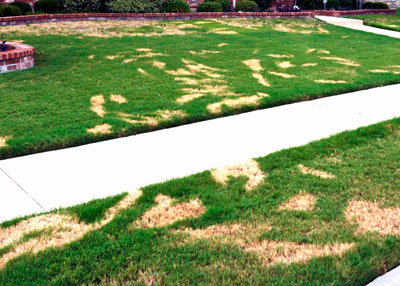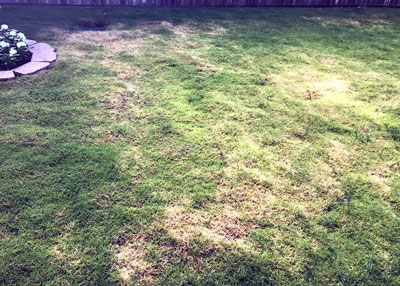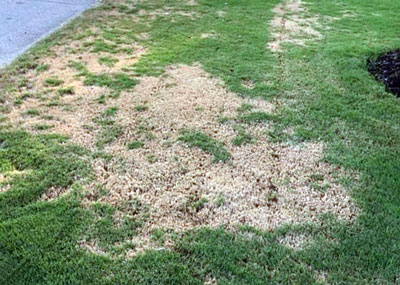Question of the Week: June 11, 2020

“What is happening to my bermudagrass lawn? It turned brown in just a few days.”
This disease is known as Pythium blight, perhaps more commonly identified as cottony blight. In some years it’s a common issue with bermudagrass turf, and this may be one of those years if questions I’m being asked is any indication.

The surprising thing with this fungus is in how rapidly it appears in our lawns. Grass will appear healthy and vigorous one day and the next day it can be browned and unsightly.
University plant pathology departments tell us that it may show up in patterns where water drains off our lawns. Try as we do at the time sod is being planted, we still get slight variations in the surface of our soils, and that can account for the tiny rivulets of runoff and disease.

Recommendations if this shows up in your turf…
Here are things you should do if Pythium blight attacks your turfgrass.
• Water only in the early morning so that grass will dry quickly.
• Avoid over-feeding your grass.
• Mow frequently and bag the clippings to remove the fungal spores.
• Prune trees to allow more sunlight to reach the grass and to allow for better air circulation.
• Apply a labeled fungicide. Do note, however, that as with other types of Pythium infections, fungicides alone may not offer the best control.
If you want to read more…
Here is a good summary of the disease as it attacks turfgrass from the Texas A&M Plant Disease Handbook.
